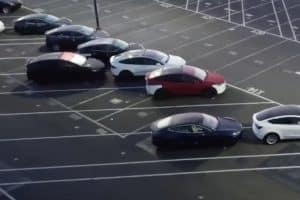- 💼 Polestar is cutting approximately 15% of its global workforce to reduce costs and increase product profitability.
- 🌐 The Volvo-owned electric vehicle (EV) maker is making these workforce adjustments due to challenging market conditions.
- 📉 Around 450 positions worldwide are expected to be eliminated as part of the cost-cutting measures.
- 📅 The decision aligns with Polestar’s business plan, aiming to achieve breakeven in the auto business by 2025.
- 💰 Polestar aims to decrease dependence on external funding from Volvo and its parent company, Geely.
- 📉 In November, Polestar revised its delivery forecast for 2023, reducing the estimate from 80,000 units to a range of 60,000-70,000.
- 🚗 Despite missing its revised forecasts, Polestar delivered around 54,600 cars in 2023, marking a 6 percent increase year over year.
- 🚙 The Polestar 4 SUV coupe entered production in November, with limited deliveries starting around Christmas.
- 🌍 Global deliveries for 2023 were announced, and the Polestar 3 has received positive reviews ahead of its upcoming deliveries later this year.
In the ever-evolving landscape of electric vehicles (EVs), Polestar, the Volvo-owned EV maker, is making waves with its recent decision to cut around 15% of its global workforce. In this blog post, we’ll delve into the details, exploring the reasons behind this strategic move, the broader market conditions influencing it, and how it aligns with Polestar’s ambitious plans for the future.
The Unveiling of Workforce Adjustments
Polestar’s announcement to reduce its global workforce by approximately 15% has sent ripples through the automotive community. This strategic move is not merely a downsizing measure; rather, it is a carefully crafted plan aimed at reducing costs and enhancing the overall profitability of Polestar’s lineup of electric vehicles.
Navigating Challenging Market Conditions
In the backdrop of this decision lies the acknowledgment of “challenging market conditions” by Polestar. The EV market, which has been steadily growing, is not without its complexities. Factors such as supply chain disruptions, fluctuating demand, and increased competition contribute to the challenges faced by companies like Polestar. This raises questions about the broader EV landscape and how manufacturers are adapting to market dynamics.
Workforce Reduction: By the Numbers
Around 450 positions worldwide are expected to be affected by Polestar’s cost-cutting measures. This reduction in personnel is part of a broader business plan that aims to position Polestar for sustained success. As the automotive industry undergoes transformative changes, workforce adjustments become a crucial aspect of adapting to new realities.
The Path to Breakeven: A Strategic Decision
Polestar’s decision to trim its workforce aligns with its ambitious goal of achieving breakeven in the auto business by 2025. This timeline is indicative of the company’s long-term vision and the steps it is willing to take to ensure financial sustainability. The auto industry is evolving rapidly, and Polestar’s strategic decision-making reflects a proactive approach to stay ahead of the curve.
Financial Independence from Volvo and Geely
Another noteworthy aspect of Polestar’s strategy is its intention to decrease dependence on external funding from its parent companies, Volvo and Geely. Achieving financial independence allows Polestar greater flexibility and control over its operations, ensuring a more robust and self-sustaining future.
Revisiting Delivery Forecasts and Market Dynamics
In November, Polestar revised its delivery forecast for 2023, reducing the estimate from 80,000 units to a range of 60,000-70,000. Despite falling short of these revised forecasts, Polestar delivered around 54,600 cars in 2023, marking a 6 percent increase year over year. This prompts a closer look at market dynamics, consumer demand, and the intricacies of delivering electric vehicles in a rapidly evolving market.
A Glimpse into Production Milestones
While Polestar faces challenges, there are also milestones worth celebrating. The Polestar 4 SUV coupe entered production in November, with limited deliveries starting around Christmas. Additionally, the Polestar 3, anticipated to make its debut later this year, has already garnered positive reviews, creating anticipation for its upcoming deliveries.
Conclusion: Navigating the Road Ahead
Polestar’s workforce adjustments are part of a strategic roadmap aimed at steering the company through challenges and towards a more sustainable and profitable future. As the automotive industry continues its electrifying journey, companies like Polestar are not just adapting; they are shaping the future of mobility.





